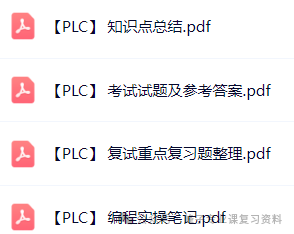For more materials, you can also follow the account below:

Reviewing PLC (Programmable Logic Controller) programming can be systematically advanced using the following methods to achieve good review results.
Organizing Theoretical Knowledge
First, comprehensively organize the basic knowledge of PLC. Familiarize yourself with the basic components of a PLC, including the CPU module, input/output module, power supply module, etc., and understand the functions and working principles of each module. Master the programming languages of PLCs, such as ladder diagram and instruction list, and be clear about the characteristics and applicable scenarios of each programming language. Understand the scanning working principle of PLCs, which is the core mechanism for normal operation.
Reviewing the Instruction System
The instruction system of PLCs is key to programming. Conduct an in-depth review of commonly used instructions, such as logical instructions, timer instructions, counter instructions, etc., clarifying the function, usage, and parameter settings of each instruction. By doing practice problems, become proficient in using these instructions to achieve simple logical control, deepening your understanding and memory of the instructions. Additionally, some special function instructions, such as data processing instructions and communication instructions, should also be understood and mastered.
Analyzing Programming Cases
Analyzing a large number of PLC programming cases is an effective way to enhance programming skills. Choose different types of cases, such as motor control, sequential control, and process control, and carefully study the control requirements, programming ideas, and program implementation methods of the cases. By comparing different case solutions, summarize general programming techniques and methods. Modify and extend the cases yourself to further improve programming skills.
Practical Operation Exercises
Practice is an important aspect of verifying review results. Use PLC experimental equipment to perform actual programming operations. Start with simple programs and gradually increase the difficulty to implement various control functions. During practice, pay attention to program debugging and troubleshooting to enhance your ability to solve practical problems. Additionally, learn to use various functions of PLC programming software, such as program monitoring and data viewing.
Comprehensive Project Review
Select a comprehensive PLC project for review. Apply the knowledge and skills learned previously to the project, participating in the entire process from project requirement analysis, solution design, program writing to system debugging. Through project review, cultivate your system thinking and comprehensive application abilities, laying a solid foundation for practical work.